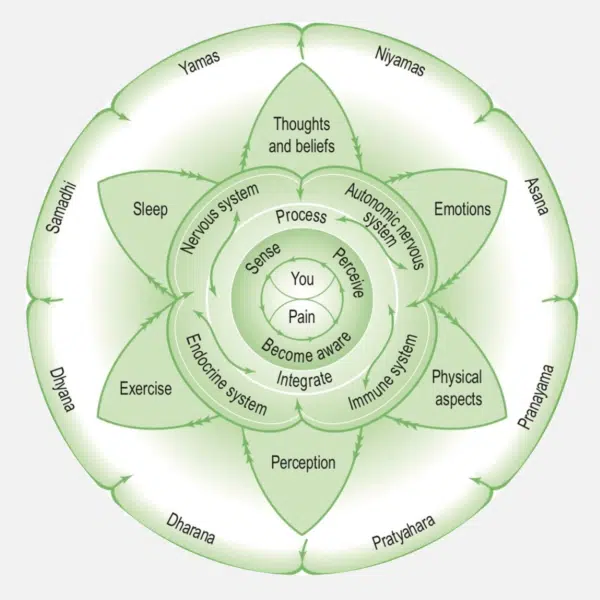Week one we took pause to notice our breath both as an act of practice, on the mat, and during daily activities, off the mat.
Learning begins with observing.
Week two we began noticing and slowly exploring how to shift the breath. Nudging toward nasal breathing while encouraging an even respiratory cycle. Off the mat we gave attention to noticing our breath during a physical activity, with the added challenge of maintaining the intensity of the activity, while encouraging the breath to remain slow and even. I suggested beginning to pay attention to a few specific characteristics, maybe even writing down observations.
Where attention goes, energy flows.
Hopefully, at this point you are finding insight into the tendencies of your breath. As we continue to deepen our own ‘Body IQ’, this week we take a look at what happens with our breath when we are in pain. Remember pain is always a multidimensional experience -physical, emotional and psychological. No need to consider these as separate entities to learn the power your breath may hold in shifting your painful scenario. For more specific information on Breath and Pain, check out Chapter 5 in Pain Science – Yoga – Life.
Breath Exercise: Breath and Pain – Emotional or Physical
Out of the Head and Onto the Mat
Find a comfortable position seated or lying or even standing. You don’t have to be on a mat, you could be in a chair or lying outside. Take a few moments to bring your breath into your conscious focus. Take note of its characteristics.
Where does it flow in and out, nose or mouth? What is its rate and rhythm? What is its depth?
Once you feel you have a good awareness of your breath bring to mind a recent mild to moderate painful experience. Remember this can be physical or emotional in its presence.
As you begin to play this memory, try not to just watch it like a movie rather begin to embody it. Meaning, don’t worry about the specific contents of the scenario, feel the experience in your body.
Where in your body does it live? What are the painful qualities – deep ache, sharp, superficial, tension, etc.
Stay with the physical feeling and again begin to notice your breath.
Has your breath changed? How does your pain influence your breath?
Do your best to keep the awareness of the physical qualities of pain as you first notice your breath and then slowly begin to shift your breath using the below practice.
Breathe in and out through the nose.
Start to slow your inhale to an even count of 4.
Take a one to two count pause with your breath held in.
Slowly exhale following a count of 5.
Continue this pattern as long it feels comfortable to do so.
Inhale 1-2-3-4
Pause 1-2
Exhale 5-4-3-2-1
As you settle into the rhythm see if you can continue to feel the place and quality of your pain noticing how it may begin to change.
After you complete your practice you may find it helpful to write down observations from your experience.
Off the Mat and Into Life
If you find yourself in a painful experience, even something simple like stubbing your toe or feeling a splinter, try to take note of your breath.
What are its characteristics? Where does it flow in and out, nose or mouth? What is its rate and rhythm? What is its depth? Sound familiar? This observation could all happen in a split second.
Once you have some awareness of your breath, gently attempt to shift into a slow deep breath, in and out through the nose. You can follow the same practice above. The reason we practice on our mats is so when we come into a real-life experience, we already know what to do.
Don’t worry if this feels challenging on the mat or off. If you don’t feel like you are able to follow or reproduce all the prompts as they are given here, that’s ok. When you take time to check in with your body, with your breath, in a variety of scenarios, you will begin to advance your own Body IQ.
Feel free to return to Breath Observation and Squaring the Breath as often as you need. These practices will help to lay a strong foundation to grow from.
Together we seek progress not perfection.

If you want to learn more about extending your life force through breath, follow along with Body IQ for the month of March. Each week of March I will offer a little breath practice rooted in tradition and backed by science. You will learn and get to practice how to influence the various aspects of your own physiology and how connecting to your own breath may be a personal super power.
Let’s raise our Body IQ through exploring breath and respiration. Together we can learn how each of our own bodies respond to taking a purposeful breath.
